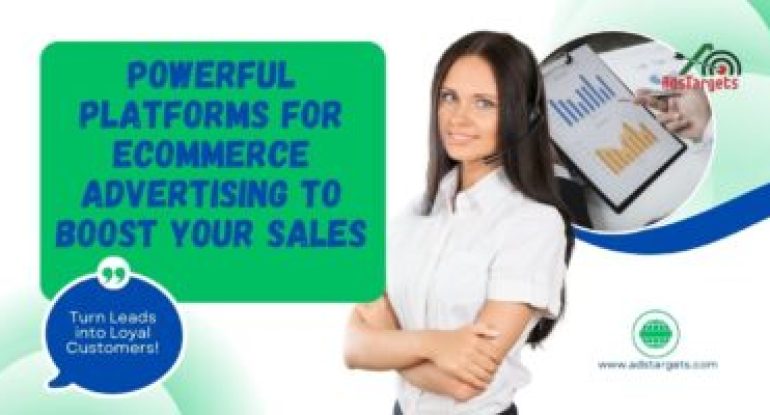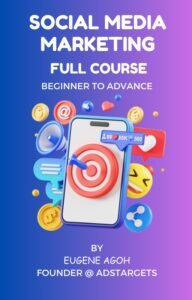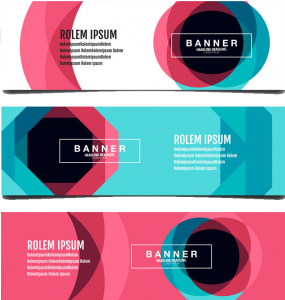Looking for great platforms for ecommerce advertising? If you’re a publisher or business owner today, you’ve probably noticed one big shift, everyone’s looking for smarter ways to make money online. Many are now turning to eCommerce and affiliate models to grow and diversify their income. Sounds exciting, right? But here’s the tricky part: with so many social media channels and ad networks out there, figuring out which one is best for your products can feel like standing in front of a giant buffet with no clue where to start.
That’s where paid ads come in. They’re one of the fastest ways to boost sales, get your brand in front of more people, and create long-term awareness. The real question is: which platform for eCommerce advertising should you choose to get the best results?
In this article, we’ll break down the top options, share the pros and cons of each platform for eCommerce advertising, and help you decide which one makes the most sense for your business. Think of it as your shortcut guide to cutting through the noise and picking the right stage to showcase your products.
Table of Contents
ToggleWhat is eCommerce Advertising?

At its core, eCommerce advertising is simply about getting more people to notice and buy products online. Traditionally, publishers use it to promote other companies’ products and services so those businesses can boost sales. But here’s the twist: publishers themselves can also run ads to reach their own goals, whether that’s growing traffic, selling digital products, or building brand awareness.
So how does it work? A publisher chooses a platform for eCommerce advertising—think Facebook, Google Shopping, or Instagram—and pays to have their ads displayed. The platform then shows these ads to the right people based on targeting settings.
Now, the payment system is usually tied to specific goals. Here are the most common ways it’s set up:
Placement: You pay a flat fee to have your ad placed in a specific spot.
Impressions: You pay for every time your ad is seen (even if no one clicks it).
Clicks (PPC): You only pay when someone actually clicks your ad.
In short, a platform for eCommerce advertising acts like the stage where your ads perform, and you get to decide whether you want to pay for being seen, being clicked, or just showing up in the right place.
How to Use Paid Social Media Ads in Your eCommerce Campaigns

Before you jump into running ads, it’s smart to figure out why you’re using them and how they’ll fit into your overall marketing plan. Once you’ve got that part clear, then you can pick the right platform for eCommerce advertising—whether that’s Facebook, Instagram, TikTok, or another channel.
Here are a few simple but powerful ways you can use paid social media ads in your eCommerce campaigns:
Win back interested shoppers: Retarget people who browsed your products but didn’t buy.
Fix cart abandonment: Create custom ads that nudge visitors who left items in their cart without checking out.
Boost seasonal traffic: Drive more people to your site during special campaigns like Black Friday or Christmas sales.
Reach new audiences: Expand into new markets, whether that’s another city or a completely different country.
Test what works best: Run A/B tests to compare different offers or creatives and see which one customers actually respond to.
When you use a platform for eCommerce advertising the right way, it’s not just about “buying ads.” It’s about building smarter campaigns that bring shoppers back, attract new ones, and help you understand exactly what drives them to hit that “buy now” button.
Best eCommerce Ad Platforms

#1. Google Ads
When it comes to online ads, Google Ads is the heavyweight champion. It’s one of the most powerful and widely used platforms for eCommerce advertising, and for good reason.
With Google Ads (previously known as Google AdWords), you can run paid search ads that appear on Google’s search results pages (SERPs). You can also tap into the Google Display Network (GDN), which lets you showcase ads across tons of popular websites. This makes Google a flexible platform—great for boosting your brand awareness or going after new customers who are ready to buy.
Advantages of Google Ads
Massive reach: Google is the biggest search engine on the planet, handling more than 100 billion searches every single month. That’s a lot of eyeballs you can reach with the right ad strategy.
Strong returns: On average, businesses get back $2 for every $1 they spend on Google Ads. For search ads specifically, the return can be as high as 800%! That’s incredible potential for any online store.
Budget-friendly for small businesses: You don’t need a huge budget to start. Smaller brands can still run effective campaigns without breaking the bank.
Easy to connect: Google Ads works well with other marketing tools, making it simple to run multichannel campaigns.
Disadvantages of Google Ads
Costs can climb fast: While small businesses can start cheap, bigger campaigns can run into six figures a year.
Limited support: Google’s customer service isn’t always the most helpful, so you either need to learn the ropes yourself or hire an expert.
Steep learning curve: Google Ads has lots of tools and options—it can be confusing if you’re just starting out.
High competition: Since everyone uses Google, you’ll be competing against a crowd of advertisers, which can push prices up.
Strict rules: Compared to other ad networks, Google enforces tighter standards on ad content.
Best for: All Product Types
Pretty much any product can succeed on Google Ads, as long as you use the targeting tools smartly. The trick is making sure your ads reach the right audience at the right time.
#2. Google Shopping
Google Shopping is like the virtual shop window for your store. Instead of just showing plain text ads, this platform for eCommerce advertising puts your products front and center in a visual way. When people search for something on Google, Shopping ads display right at the top of the page with product photos, titles, prices, store names, and even reviews.
If someone likes what they see and clicks, they’re taken straight to your product page where they can buy instantly. The setup runs through Google Merchant Center, and like other pay-per-click ads, you only pay when someone clicks on your product.
Advantages
High conversion power: Since most shoppers start their search on Google, Shopping ads catch people who are already ready to buy.
Easy automation: Google’s algorithms do a lot of the heavy lifting—pulling your product info, creating ads, and matching them with the right searches.
Visual impact: Instead of boring text, you get eye-catching product photos right at the top of search results.
Disadvantages
Setup takes time: It can take a while to get your catalog and Google Merchant Center synced. But once that’s done, campaigns pretty much run themselves.
Best type of products for this platform
Almost anything sells well on Google Shopping, but it’s especially strong if your products look good in photos and are easy to compare.
Fashion
Fashion brands absolutely thrive here. Clothes, shoes, bags, and accessories stand out visually, and Google Shopping ads give them the spotlight they need. Since shoppers love browsing styles before clicking “buy,” this platform for eCommerce advertising works perfectly for fashion retailers—boosting visibility while driving more sales.
#3. Bing Ads
When it comes to search engines, Google may wear the crown, but Bing has quietly carved out its own loyal audience. In fact, Microsoft says Bing still makes up about 14.5% of the global desktop search market. That means billions of searches every month—and here’s the kicker: every single person on Bing’s network has bought something online in the last week.
So, if you’re serious about reaching real shoppers, Bing Ads deserve a spot in your strategy. It even comes with Bing Shopping, which works a lot like Google Shopping Ads, making it another solid platform for eCommerce advertising.
Advantages
Less competition: Bing isn’t as crowded as Google. That means your ads can stand out more—and cost less. In fact, studies show that the average cost-per-click (CPC) on Bing Ads can be up to 70% cheaper than Google Ads.
Wider reach across networks: Running Bing Ads doesn’t just stop at Bing. Your ads also appear on Yahoo, AOL, and Microsoft’s partner sites. That’s a big plus if you want to connect with people you’d miss by only advertising on Google.
Disadvantages
Smaller audience: It’s true—Bing’s traffic is lower than Google’s. So while you might pay less per click, your overall reach won’t be as massive.
Features lag behind Google: Bing Ads usually follow Google’s lead. New features, reporting options, and updates often come out on Google first.
If you’re in fashion eCommerce, Bing Ads can be a surprisingly good fit. Why? Bing’s audience skews slightly older, with a lot of desktop shoppers who tend to spend more per purchase. That makes it a great platform for eCommerce advertising if you sell higher-ticket items like luxury apparel, branded shoes, or accessories. Think of it as targeting buyers who aren’t just browsing—they’re ready to spend.
#4. Facebook Ads

Did you know that over 2.8 billion people use Facebook every month? That’s more than a third of the world’s population. Imagine putting your business in front of that many eyes! That’s why Facebook Ads have become one of the most powerful tools in the digital marketing toolbox—and a must-have platform for eCommerce advertising.
With Facebook, you’re not just showing ads—you’re connecting with people where they spend their time. You can create ads to build brand awareness, get products in front of potential customers, or even use Collection Ads, which let people go from “just browsing” to “buying” without ever leaving Facebook. And with smart targeting, you can reach both new customers and encourage repeat purchases from loyal fans.
Advantages
Reach billions: Facebook has the largest user base of any social media platform. That means you have access to an almost unlimited pool of potential buyers.
Find your niche: From teenagers to grandparents, Facebook users span across every demographic, making it easier to reach the exact audience you’re after.
Super-targeted ads: Facebook’s targeting options are top-notch—you can reach people based on their location, job, interests, online behavior, and more.
Easy to budget: You can set daily or campaign budgets and adjust them as needed, making it beginner-friendly.
Boost engagement with video: Facebook is a powerhouse for video ads, giving you a chance to tell your story in a fun and engaging way.
Disadvantages
Costs are rising: As more businesses jump on Facebook Ads, competition grows, which pushes up ad prices. Still, it’s cheaper than many other advertising options.
Takes practice: Running effective campaigns takes time and skill. Smaller businesses sometimes struggle because they don’t have the time to experiment or optimize.
Best Type of Products for Facebook Ads
Fashion is one of the hottest categories on Facebook. From clothes and shoes to accessories, Facebook’s visual nature makes it perfect for showing off styles that catch attention quickly. Eye-catching images, short videos, or even fun reels can instantly spark interest and push people to shop.
But fashion isn’t the only winner here. Food, tech gadgets, DIY kits—almost any product can thrive on Facebook. The key is to create scroll-stopping content and match it with smart targeting. That’s why Facebook is such a solid platform for eCommerce advertising—it gives your business the reach, the tools, and the flexibility to find and grow your audience.
#5. Instagram Ads
Instagram isn’t just a place for sharing selfies, travel pics, and food snaps anymore—it’s one of the hottest platforms for eCommerce advertising. What makes Instagram stand out is that it’s all about visuals. If your product looks good in photos or videos, this is the perfect spot to show it off.
Here’s the reality:
81% of Instagram users use the app to research products and services.
Every single month, 130 million users tap on shopping posts.
That means people aren’t just scrolling for fun—they’re shopping while they scroll. Advertisers can run image ads, video reels, or even Stories to grab attention. Plus, ads can link directly to your product page or a landing page, so shoppers can buy with just a few taps.
Advantages of Instagram Ads
Super engaged audience: Over half of Instagram users log in every single day. That’s a lot of opportunities to put your brand in front of them.
Shoppers who actually buy: Around 75% of people take action on ads they see, and over a third go on to make a purchase. That’s powerful for any eCommerce business.
Laser-focused targeting: Since Instagram is owned by Facebook, you get access to the same advanced targeting options—meaning your ads can reach the exact people you want.
So many ad types: Stories, reels, videos, carousel ads, shopping ads—the platform gives you plenty of ways to test and see what works best.
In-app shopping: Customers don’t even have to leave Instagram. With formats like Collection ads, people can discover, browse, and buy all without switching apps.
Disadvantages of Instagram Ads
Takes time to learn: Like Facebook, running truly effective Instagram campaigns isn’t instant—it takes practice, testing, and sometimes expert help.
Visual content is key: This platform demands quality. If your images or videos aren’t polished, it’s hard to stand out.
Best Products for Instagram Ads
The golden rule? If it looks good, it sells better here.
Fashion: Clothes, shoes, and accessories absolutely thrive on Instagram. People love seeing how they look when styled, so brands that use reels, stories, and influencers usually see big wins.
Cosmetics and skincare: Perfect for before-and-after shots, tutorials, or influencer demos.
Homewares and décor: Beautiful spaces and aesthetic designs pop on this platform.
Food and health products: Recipes, snack videos, and fitness items grab attention fast.
In short, Instagram is a visually-driven platform for eCommerce advertising that turns casual scrolling into shopping. If your brand invests in creative content, it can easily turn likes into sales.
#6. Twitter Ads
Twitter might not be the very first place that pops into your head when you think of eCommerce ads, but it has been one of the most active social platforms since it launched back in 2006. People go there for breaking news, trending topics, and to engage directly with influencers, brands, and even celebrities. This makes it an interesting platform for eCommerce advertising if you want to connect with audiences in real-time.
Advantages
High engagement: Twitter ads often get a lot of interaction. In fact, studies show that engagement rates for Twitter ads can reach up to 1–3%, which is higher than Facebook’s average click-through rate (CTR). (CTR means “click-through rate,” or simply the number of people who click on your ad after seeing it.)
Less crowded: Unlike Facebook or Instagram where millions of businesses are running ads every second, Twitter only has around 130,000 advertisers. That means less competition for attention.
Disadvantages
More costly: Twitter ads are usually more expensive compared to Facebook ads. But because they get strong engagement, the investment could still be worth it.
Limited analytics: You won’t get the same deep reporting or insights that platforms like Facebook Ads Manager or Google Analytics offer.
Smaller reach: Twitter has about 187 million daily users, which is much less than Facebook or YouTube. Still, they’re highly active and engaged—which is gold for marketers.
Best Type of Products for Twitter Ads
Twitter has a bigger male audience—about 70% of users are male compared to 30% female. So, it’s a smart platform for eCommerce advertising if you’re selling products that appeal more to men.
Twitter can also work really well for fashion brands. You can use it to share new collections, limited drops, or style inspiration. Fashion thrives on trends and conversations, and Twitter is basically built around both. Pair your ads with the right hashtags, and your products can quickly catch fire in conversations.
#7. TikTok
TikTok might be one of the newer kids on the block when it comes to ads, but it has quickly grown into a favorite platform for eCommerce advertising. With over 1 billion users worldwide (and more than 50 million in the U.S. alone), it’s a place where young people spend hours scrolling, laughing, learning, and shopping. On average, users spend about 476 minutes a month on TikTok—making it one of the most addictive apps out there, second only to Facebook.
Just like Instagram, TikTok also gives you a chance to work with influencers—popular creators with loyal fans. TikTok even has its own Creator Marketplace to help brands connect with these influencers in an easier way.
Advantages
Super engaged audience: TikTok users don’t just scroll—they interact. Brands that post fun, creative content often see huge engagement.
Room for creativity: TikTok ads aren’t boring. You can use hashtag challenges (where users create their own videos using your brand’s hashtag), which often get over 8% engagement—that’s massive compared to other platforms.
eCommerce integration: TikTok connects with Shopify, letting you run ads and track sales without leaving your store dashboard.
Global reach: Because TikTok is growing so fast around the world, it’s a great way to test out new international markets.
Disadvantages
High advertising cost: TikTok ads can be pricey, starting at about $10 per 1,000 views (CPM).
Fewer ad options: Most ads are shown in-feed (in between user videos), so you don’t have as much flexibility as Facebook or YouTube.
Native content only: You can’t just recycle an ad from Facebook or Instagram—it has to look and feel like a TikTok video, or people will swipe away.
Video-focused: No static graphics here—you’ll always need video, which can mean higher production costs.
TikTok works best for products aimed at Gen Z and millennials, since they make up about 75% of TikTok’s audience. If your product is fun, trendy, or easy to show off in a creative way, TikTok is a powerful platform for eCommerce advertising.
Fashion products shine on TikTok because style is something people love to show off. From outfit hauls to “get ready with me” videos, TikTok makes it easy to turn clothes, shoes, and accessories into viral content. This is why many fashion brands are thriving here—it’s a natural fit for the playful, visual style of the app.
#8. Snapchat
Snapchat isn’t just for teens anymore. With over 306 million people using it every day, this app is growing fast, and many of those users are actually 26 and older. For businesses, it’s becoming one of the underrated but powerful platforms for eCommerce advertising, especially if you’re looking for fun, interactive ways to showcase products.
What makes Snapchat stand out is the way ads work—you can run interactive ads where people swipe up or tap to shop directly. On top of that, brands can create custom filters and AR (augmented reality) lenses so users can “try on” or play with products virtually before buying.
Why Snapchat Ads Work
Impulse shoppers love it – Snapchat users are 60% more likely to buy on the spot, and together they have a crazy $4.4 trillion in spending power.
Mobile-first audience – People are more likely to shop on their phones now than ever before, and Snapchat makes sure your brand is right in front of them.
Big visual impact – Ads are full-screen, immersive, and hard to miss. Perfect for grabbing attention in seconds.
Budget-friendly – You can start testing ads for as little as $5 a day.
AR = more sales – Augmented reality experiences, like letting someone “try on” sunglasses through their camera, make people 94% more likely to buy.
Snapchat’s audience is smaller compared to giants like Facebook or TikTok, which means it can be harder to scale campaigns. But this isn’t always a bad thing—it actually makes Snapchat a great platform for eCommerce advertising if you want to test strategies away from the noisy competition of Google and Facebook.
Snapchat is especially powerful for fashion brands. Imagine giving someone the chance to try on a pair of sneakers or sunglasses through an AR filter before buying—it feels personal, fun, and exciting. Younger shoppers love experimenting with styles, and Snapchat gives them that instant “try before you buy” experience right from their phone. For clothing, accessories, and beauty items, this can boost conversions in a big way.
#9. LinkedIn
LinkedIn isn’t like your everyday social app—it’s the world’s biggest professional network where people connect to talk about work, careers, and business opportunities. That’s why it’s more of a platform for eCommerce advertising if you’re targeting businesses (B2B) rather than just everyday shoppers (B2C). Think of it this way: while Facebook or Instagram might help you sell sneakers or cosmetics, LinkedIn is where you pitch software, office gadgets, or professional gear to company decision-makers.
Why LinkedIn Can Work for You
Perfect for B2B: If your goal is to reach CEOs, managers, or anyone making business decisions, LinkedIn is the best place to be. You can generate high-quality leads because you’re speaking directly to professionals.
Less competition: Since most brands focus on B2C platforms, it’s easier for niche businesses to stand out here.
The Downsides
Not always great for B2C: If you’re trying to sell shoes or lifestyle products, this may not be your best bet as it’s not the most popular platform for eCommerce advertising in that space.
Basic tools: Unlike Facebook or Google Ads, LinkedIn doesn’t give you super-detailed reporting or easy duplication tools. Testing campaigns here can feel a little slow.
Best Products to Sell on LinkedIn
LinkedIn ads shine when promoting B2B products, tech tools, professional clothing, or even work-from-home essentials. Basically, if your product helps people do their jobs better, LinkedIn is where it belongs.
#10. Amazon Ads
Amazon isn’t just an online store—it’s a platform for eCommerce advertising that puts your products right in front of people who are already searching for them. Think of it like setting up a shop in the busiest marketplace in town, where visitors aren’t just browsing, they’re actually ready to buy. With Amazon Ads, you can bid on keywords and placements so your products appear higher in search results, helping you reach more shoppers who want exactly what you’re selling.
Why Amazon Ads Work
Shoppers are ready to buy: People don’t come to Amazon to scroll for fun; they come because they’re looking for something to purchase. That’s a huge advantage for sellers.
No website needed: Unlike other platforms, you don’t even need your own website to start advertising. That makes it one of the easiest entry points into eCommerce.
Quick setup: Creating an ad takes just a few minutes. You pick the products you want to advertise, set your budget, and your ads can start running almost instantly.
Different campaign types: You can run Sponsored Product ads, Automatic Targeting, or Manual Targeting campaigns depending on your goals.
The Downsides
Higher fees: Amazon takes a cut—charging referral fees plus ad fees, sometimes up to 15% of the sale. That can eat into profits if your margins are low.
Strict rules: Amazon has very strict seller standards. From shipping times to customer service, you have to meet their expectations or risk penalties.
Best For
Amazon Ads work best for products with high profit margins and for brands that already have reliable logistics and customer service in place.
If you’re looking for a platform for eCommerce advertising where buyers are actively hunting for products like yours, Amazon is one of the strongest options out there.
Conclusion
At the end of the day, the main goal of running social ads is simple: bring more people to your store and sell more products. But here’s the thing—there’s no “one-size-fits-all” solution. Every platform for eCommerce advertising has its own strengths and weaknesses, and the right one for you depends on your products, your budget, and your audience.
Take the time to look at each option carefully, see what works best for your brand, and then dive in. Just like with any marketing effort, the trick is to keep experimenting. Try different ad types, test your ideas, and measure the results. The more you test, the better you’ll understand what works—and that’s how you’ll find the perfect platform for eCommerce advertising to grow your sales.








